Whether it’s the dog days of summer or a night out dining at the finest Michelin-rated restaurants, the right cologne can compliment any occasion.
While many experts may steer clear of recommending wearing cologne for an interview or the first date, they largely always miss the simple fact that it comes down to both proper application and wearing the best cologne to complement the setting.
Whether you are looking for a fresh clean scent or one that is much spicier and/or musky, the perfect cologne will not only make you smell like a rockstar (in a good way) but will also draw in those around you.
So while you might have a bad taste in your mouth, or nose, from when you were a kid while remembering your grandfather bathing in this stuff, the colognes of today will bring your style and grooming game to the next level.
Here are the best smelling colognes currently available.
Related: Best Cheap Colognes
The Best Smelling Men’s Colognes Reviewed
1. Versace Eros
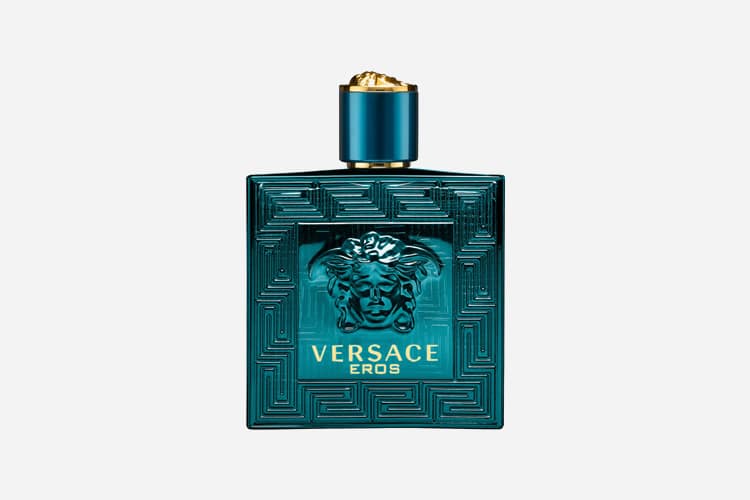
Versace Eros Cologne is spray-on sexy that is an essential addition to any man’s collection.
Impress your partner with the refreshingly cool feeling of a tropical breeze on your skin. This cologne is a must-have for any collection, simply due to its all-day lasting power and zesty fragrance.
The scent itself is not overpowering in the slightest and instead leaves a light, breezy trail in your wake. Eros is the kind of fragrance that lingers around you like a well-fitted suit, and like a suit, it will have everyone asking about what you are wearing. It’s that good.
The cologne begins with notes of vanilla and oakmoss to give the fragrance an earthy yet light base with which to work off.
Floral scents such as geranium are added to bring out the essence of the tropics, and tonka bean extract supplements the vanilla low tones to really draw out the sweet and spicy.
Finally, Eros’ most distinctive fragrance is its high notes, which are comprised of fruit extracts such as apple, lemon, and mint.
The mint is what gives this fragrance its a distinctly cool feeling, and the citrus amplifies to the tropical paradise captured within the bottle.
However, Eros is not an overpowering scent; while the fragrance is strong, it is not so strong as to choke out everyone around you, and merely acts as a statement to your character.
With the citrus highs playing with the earthy lows, you will feel as though you are on vacation all day.
2. Armani Code

Sophistication. Elegance. Class.
These are the words that come to mind when you hear “Giorgio Armani”. However, you can also wear these labels in the form of Armani Code, a trusted fragrance from Armani.
Since its inception, Armani Code has stood the test of time, becoming a fast favorite among users for its warm undertones and spicy high notes.
This fragrance is a black-tie event condensed into a little bottle and is deployed from your fingers in an instant to deliver a concentrated spray of cool cologne. The scent of this fragrance is not overpowering in the least, preferring to linger on your body as an accent to your charisma.
You, sir, are the star of the show.
Armani Code uses only the finest of ingredients to put into their fragrances. The delicate notes of bergamot and olive blossom create a high-class scent profile that tantalizes the senses.
Tonka bean and guaiac wood extract provide a vanilla-rose scent that is equal parts sweet and sexy.
The resulting fragrance is a symphony of scents perfect for evening dinners and dances.
Armani Code is cocktails and martinis. Shaken, not stirred.
3. Creed Aventus
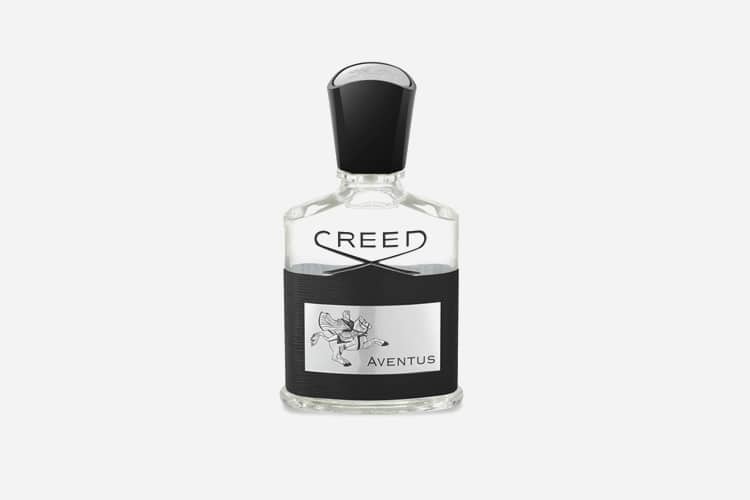
“Aventus” by Creed is a cologne that tells the story of kings, emperors, and conquerors.
Empires long crumbled to dust, but the epic battle still rides on the wind today as a memory of lands taken and thrones overthrown.
Aventus is the embodiment of the wind at your back as you ride into battle, a majestic steed beneath you.
It is cool and fresh but packed full of energy and anticipation.
It smells like adrenaline and raw power; a fight, a challenge, and you shall rise to the occasion. Aventus is the fragrance of success.
This cologne was introduced in 2010 by Oliver Creed, directly related to the fragrance’s namesake. Mr. Creed, with his son Erwin, crafted this adventurous and innovative scent to inspire men who strive for greatness.
Related: How to Smell Great
It is the best-selling fragrance in the history of Creed, due to its powerful, manly scent profile.
Creed believes that the Aventus man is a man who is inspired to live a full and rewarding life. This fragrance is the embodiment of that.
Upon opening this cologne, there are definite hints of pineapple, blackcurrant, and apple.
A fruit mix that screams decadence and indulgence. However, it is quickly replaced by birch, patchouli, and jasmine to tone down the sweetness and begin building a smoky scent profile that is characteristic of this cologne.
What is left at the end is an empowering fragrance that pushes you onward to victory.
The wind is at your back, now rise to the occasion.
4. Bvlgari Pour Homme Soir

For the ultimate experience in fine fragrances, you want the very best to leave a lasting impression – especially if you are looking for one that women love.
Whether it’s a dimly lit dinner or a late-night rendezvous, you want to wear something that speaks highly of you without saying a word.
Bvlgari Pour Homme Soir is an exquisite evening-wear fragrance that will last you all through the night…and later if when you get lucky.
Made with hand-picked spices and specially formulated musk, Bvlgari uses quality ingredients to accentuate everything that you are. Even the bottle is the definition of class, with a sleek design and unique spray nozzle for optimal coverage.
Pour Homme Soir utilizes a unique blend of tantalizing spices, select dried wood extracts, and amber to create a wholesome mix of enticing scents to attract the attention you deserve.
It is bold enough to be noticed, and yet it is subtle in its delivery. With all that Pour Homme Soir is, you would expect that it is ludicrously priced, however, this fragrance goes for much cheaper than other brands without compromising quality.
When reviewing this cologne, several men stated that this was a lady killer and that it definitely turned a few heads my way.
You can expect this fragrance to last between 2 to 4 hours, depending on skin type and weather conditions.
5. Chanel Allure Homme Sport
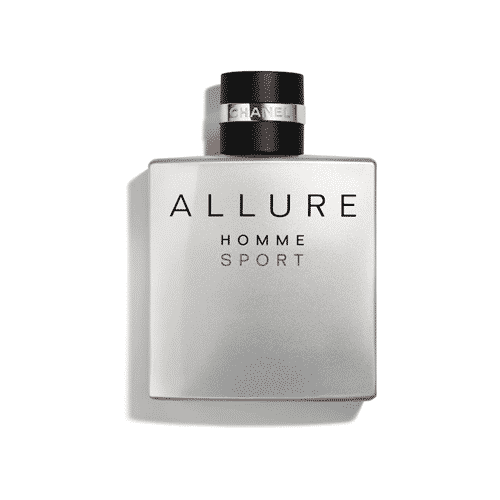
Chanel’s Allure Homme Sport is exactly what it sounds like; an alluring and tempting fragrance that is exciting and enticing.
This scent is sexy and suave, with notes of citrus and marine accord. It is designed to be a light and refreshing scent without being weighed down by heavy musk tones.
Allure Sport is a suitable fragrance for people who want an invigorating fragrance that is not flowery or feminine but is not aggressive and macho like traditional musk.
If you have tried Chanel’s Allure, Sport is cooler and more aquatic than its original counterpart.
Launched in 2004, Chanel’s fragrance has become a fast favorite among men and women who crave a lightweight cologne for casual wear. If you are looking for a cologne that attracts women, then this is your best bet.
Floral and citrus notes play an equal part in giving this fragrance a zesty, spicy, and overall refreshing feel. Buyers of this product say that Allure Sport is a very fresh, long-lasting scent.
It’s great for athletes and casual cologne users alike who want a cleaner, more pronounced fragrance.
6. Chanel Bleu de Chanel
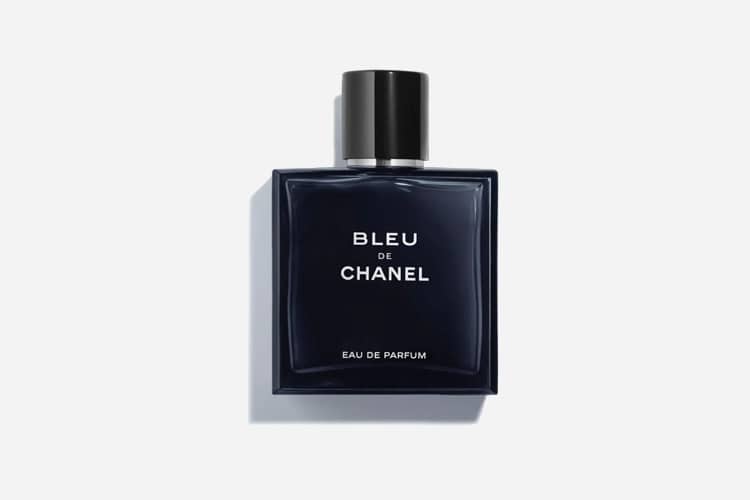
Resist convention with Chanel Bleu de Chanel, an exhilarating fragrance that spearheads innovative scents with the thrill of the unexpected.
This cologne is an earthy blend of wood and citrus notes, with many other rich ingredients such as frankincense, vetiver, and jasmine. It is a clean, fresh, and irresistibly sexy scent that wraps around you like a comfortable jacket.
Chanel Bleu is perfect for everyday wear and for special occasions.
The key base notes are sandalwood and patchouli, which both have a distinctly woody and musky scent.
For its core scents, Chanel uses citrusy fruits and spices such as jasmine, grapefruit, ginger, and cedar to create an invigorating scent profile that boosts the fragrance and balances the deeper, richer tones.
Finally, lighter notes of lemon, mint, and nutmeg add more spice and further volume to the cologne to create a unique experience that exudes greatness.
For men looking for a confidence boost, this is a spectacular cologne that is bottled confidence and grandeur. A short spray on key pressure points will last through most of the day.
7. Cool Water By Davidoff
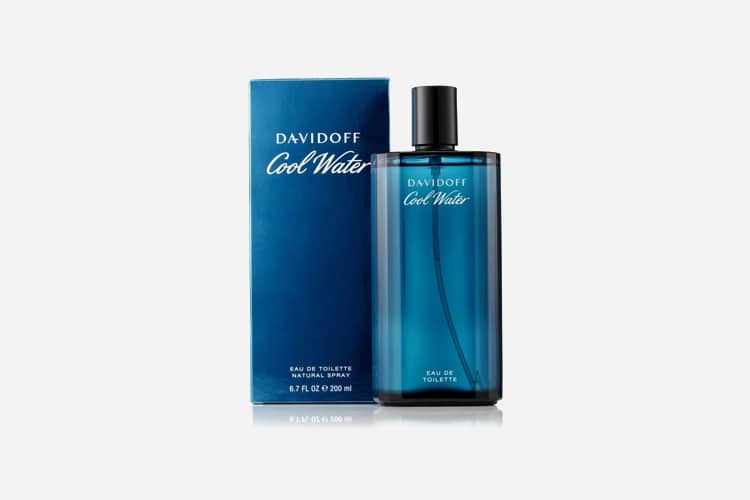
A perfect blend of floral and musk for a well-rounded masculine experience lies with Davidoff’s Cool Water cologne.
Since 1988, Cool Water has been a go-to brand for many men who want a refreshing scent without being too floral and is a trusted cologne for regular fragrance users.
This particular scent is best used during daytime hours, such as for the office or for going out due to the breezy tropical scent.
The light fragrance is not too overwhelming for close quarters and will last throughout the day as a gentle scent beneath your collar.
Of course, many factors affect how strong the product is; heat, stress, and skin composition are all prime factors to consider.
Even sweating can negatively affect how this product smells on you, so if you are a man who has a tendency to sweat, consider putting this cologne on your pressure points instead of on your torso or neck.
With this tip in mind, any body type is able to wear this cologne with ease. It is a wonderful complement to your daily life and is sure to be a recognizable scent.
8. Dolce & Gabbana’s The One

The One by Dolce & Gabbana offers a unique experience for buyers who want a casual wear fragrance.
This cologne is a warm, fragrant, and bold scent that is carefully crafted to ensure both quality and that the scent is appealing to the wearer and those around him.
“The One” is made with a spicy ginger and cardamom heart to accentuate the warmth of the product, and is built on top of a cedar and tobacco base for that added boost of masculinity. The top notes of grapefruit and coriander are what give this fragrance a citrusy twist, and ties the entire fragrance together nicely.
This fragrance is not a suggestion, it is a statement, and it wants you to be both bold and confident.
It is an intensely warm and invigorating scent that combines the best of daytime colognes and puts them together into one convenient bottle.
With that being said, it is very bold, and may not be for everyone. If you prefer a subtler scent, this is probably not the fragrance you are looking for. However, if you want something that’s confident, this cologne is perfect for that added boost.
9. Giorgio Armani Acqua di Gio
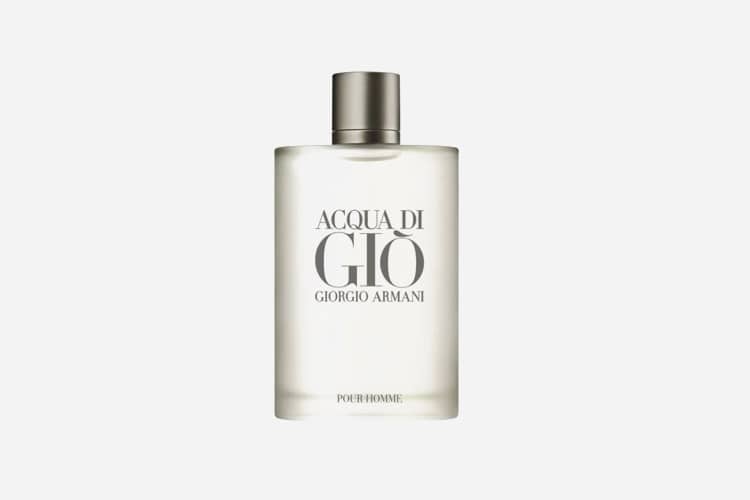
Giorgio Armani is a name that exudes luxury and class, and their Acqua di Gio cologne is no exception. Everything from the ingredients to the bottle is carefully crafted to showcase excellence.
Wearing this fragrance is nothing short of bold and daring, for you are a man of high stature. Acqua di Gio was inspired by the beautiful island of Pantelleria, surrounded by the Mediterranean Sea.
This fragrance encapsulates rich Italian expression with the refreshing kiss of the ocean. This is a brash man’s fragrance that combines the finest natural ingredients with the essence of freedom.
Acqua di Gio has a musky, woody base that is built upon by citrus and aromatics such as rosemary to round out this exquisite cologne. With this product, you are getting a sample of wealth and fortune that you can wear all day long.
However, with such delights there is a cost; like all of Giorgio Armani’s products, the price tag can be a bit overwhelming for those that are used to lower-tier colognes.
With Armani’s Acqua, you pay for what you get, and what you get is nothing short of the best.
10. Kenneth Cole Reaction

There are a whole host of colognes out on the market that boasts of being acceptable for everyday wear or even around the office.
However, despite these claims, a lot of those fragrances are either too strong or too weak, which isn’t good if you want that promotion with your boss.
Enter Kenneth Cole Reaction; an innovative cologne with a pleasant blend of fruits and musk that is appropriate for wear around the office without choking the guy three cubicles down.
“Reaction” is a milder scent and is best applied to the pressure points, such as your wrists or behind your ears to get the most out of this fragrance.
Though it is not bold by any means, it is also not weak or watered down, and boasts an interesting blend of musk, various fruit extracts, and exotic spices that lift this cologne up from being just another everyday scent.
“Reaction” utilizes melon rind, green apple, and patchouli for a mild bite that’s noticeable but not overpowering, but the lasting power of this fragrance does take a hit.
It lasts between 4 and 6 hours; enough to get you through the morning meeting but not quite enough to make it to the end of the day.
It is a great summer scent, so you can wear it to that company barbeque your boss has been emailing you about.
Overall, a pleasant scent that is equally invigorating as it is mild and sweet. It’s not a flowery or fruity scent thanks to the musk and the patchouli undercurrent present in the fragrance.
11. Kiehl’s Original Musk
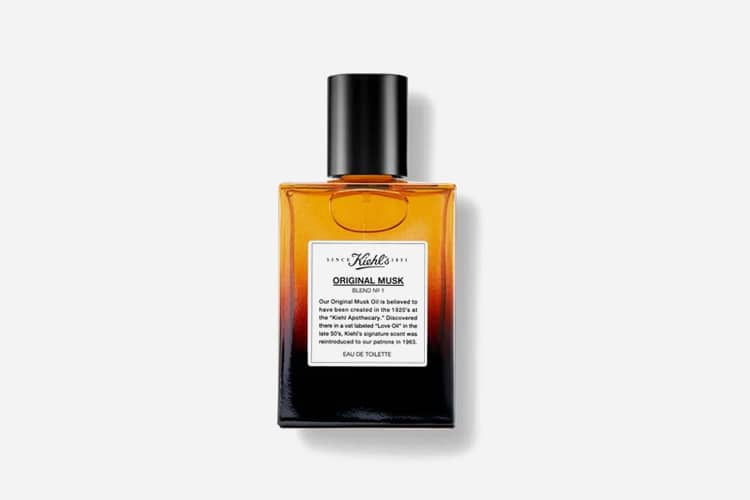
Nothing beats a traditional cologne scent.
For men who prefer staying within their comfort zone, Kiehl’s Original Musk is an ideal fragrance. Reimagined from the original 1851 musk, Kiehl’s Original combines a blend of floral scents and subtle musk to create an old-fashioned scent that many people are familiar with.
This cologne is definitely on the strong side of the spectrum with it being a direct interpretation of cologne used back in the day, but it is still pleasantly masculine.
It features subtle floral scents with heavy musk overtones to deliver a raw smelling cologne packed with a punch.
To enjoy this scent, spray just a little on each of your pressure points: wrists, neck, and ears should be sufficient. This product starts off very strong, with the musk playing a big part in this fragrance, followed closely by floral scents and citrus undertones.
However, after application, the cologne should settle down into a very warm and relaxing scent that is enjoyable and invigorating. Be careful when spraying that you do not overdo it, otherwise you will smell like musk for days.
The scent of Kiehl’s Original Musk will last anywhere from 6 to 8 hours and is perfect for daily office wear.
12. L’eau D’issey
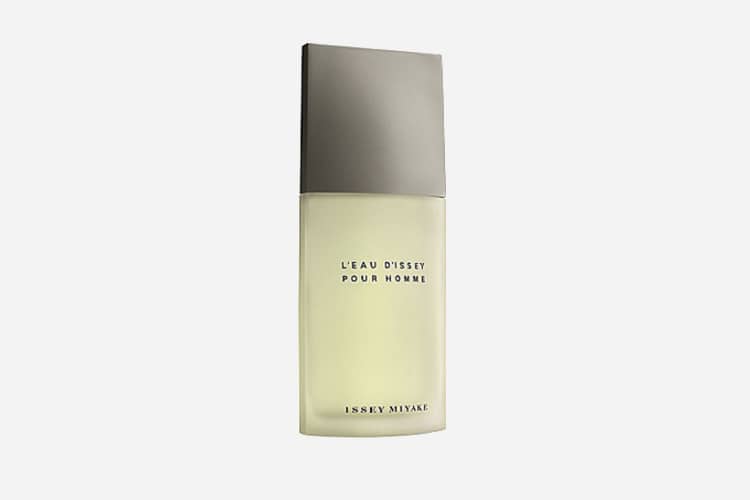
L’Eau D’Issey Pour Homme by Issey Miyake is everything romantic and sensual.
This cologne is ideal for close encounters of a more intimate nature. The high notes of this fragrance suggest citrus and spices, held afloat by lower tones of musk and amber.
These ingredients combined are a whirlwind of subtle scents that are sure to please. It is not overpowering in the least and is not so subtle that it goes unnoticed.
This alluring fragrance was initially introduced in 1994, and since then has continued to be a suggestive and alluring fragrance for men.
L’eau D’Issey uses notes of citrus blended with musk to create a cologne for the evening hours. It is a masculine scent that can be described as spicy and citrusy, almost zesty to the nostrils, but it is also soothing and rich, like whiskey during the winter months.
Apply this cologne sparingly; a little goes a long way with this fragrance and should be used as an invitation, not an announcement. Apply to the wrists and neck for an all-around scent that lasts all night.
13. L’homme Yves Saint Laurent

Yves St. Laurent bottles the essence of irresistible charisma within their fragrance “L’Homme”. “L’Homme” features low notes of amber and cedar, giving this fragrance a distinctly warm and mellow scent, rounded out by mid-tones of violet and bergamot.
White pepper, White ginger, and basil sprinkled as the high tones of this fragrance leave this cologne with a tantalizing mix of earthy and airy scents.
Yves St. Laurent’s cologne is best worn during short encounters, instead of as an all-day fragrance due to the shorter than average staying power this product has.
Expect to get about 4 hours of mileage out of every wearing.
Despite the minimal wear time, it is still an optimal product for going out or staying in.
It is a versatile fragrance that would suit any occasion, no matter how casual. The scent is a citrusy twist on an old favorite, without coming off as feminine or flowery.
It’s the perfect blend of fruit flavors and earthy tones, with a little bit of floral thrown into the mix to create a truly unique experience.
Wow your company with this indulgent fragrance, and see the difference over your run-of-the-mill cologne.
14. Noir Eau de Parfum by Tom Ford
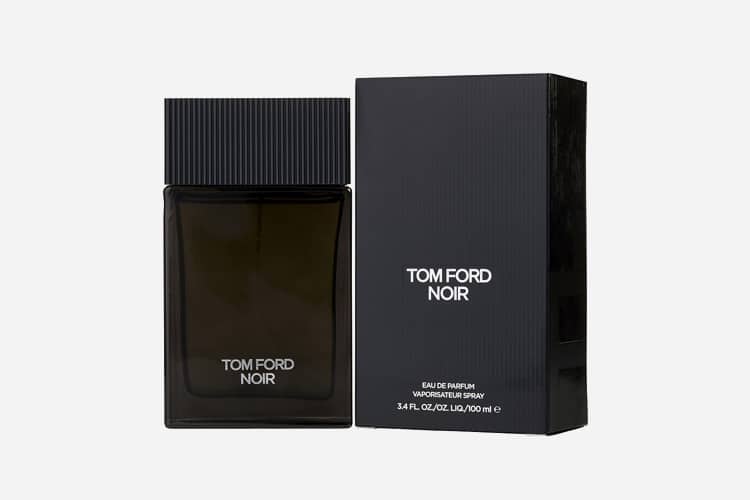
Tom Ford Noir is a cologne that is a double-faced scent.
It is simultaneously bravado and charm, slicked-back hair, and a warm smile. It is the embodiment of a firm handshake filled with confidence. However, it is also the embodiment of privacy, of another man behind the public curtain.
It is sensual and sophisticated.
Quiet, like the early morning hours before sunrise. Noir encapsulates these feelings and merges them together to create a subtle fragrance that is both spicy and sweet.
Noir has a distinctly oriental scent, made with bergamot, pepper, Bulgarian rose, and vanilla.
Vanilla in particular adds a valuable sweetness to the cologne to ensure that it is not too overpowering.
Bergamot is a citrus fruit, giving the cologne a bit of a bite without smelling like a fruit salad.
Other floral scents make this fragrance light and airy, and the black pepper adds a distinct spicy burn. The initially strong scent mellows out after a few minutes, but the resulting smell lasts for hours, and can easily be both a daytime and nighttime cologne.
15. Paco Rabanne 1 Million Eau de Toilette Spray for Men

Feel like a million dollars without breaking the bank.
Paco Rabbane’s “1 Million” fragrance is made especially for men to feel like men.
It is the greatest statement of masculinity, with notes of leather, wood, Indian patchouli, cinnamon, and other spicy notes.
What does that mean?
Leather is a rich, classic scent that suggests ruggedness and class, and the wood tones give it a raw, earthy feel that pairs perfectly.
Patchouli and cinnamon are for spice, to give the fragrance a kick. Floral extractions are added to lighten up the cologne and give it a hint of something the ladies find irresistible.
If the ingredients weren’t enough, “1 Million” comes in a gold bottle.
Regretfully, it is not real gold, but just holding the cologne in your hand makes you feel like King Midas.
Spraying this scent on your body will make you feel powerful, which is what this scent is.
Raw, unfiltered power. In fact, it’s almost overwhelmingly strong, so take care not to douse yourself in it.
A little spritz on your pressure points should be more than enough. Alternatively, you can spray your shirt the night before and let it air out overnight.
The lasting power of this fragrance is 8 hours or more, depending on the application method.
16. Paco Rabanne Invictus

Be the master of your fate with Invictus by Paco Rabbane.
Invictus is the scent of victory, using high-quality ingredients such as ambergris and guaiac wood extracts to bring out the champion in you.
This scent is powerful, like an athlete waiting to be unleashed. It feels raw and unfiltered but cool to the skin, and the fragrance is akin to a cool drink of water.
The fragrance opens with its citrus notes, moving through the marine accord and into the deep patchouli tones that tie the fragrance together. It is a unique and exhilarating fragrance that is a must-try.
A large number of buyers agree that Invictus is an amazing fragrance that smells great no matter the occasion.
Perfect for everyday wear or to impress that special someone. A few lucky buyers even reported garnering considerable interest after wearing this product.
Like other Rabbane fragrances, Invictus is a powerfully strong cologne that can very easily drown you out. A little spray on the pressure points is enough to get you 8+ hours of wear.
17. Ralph Lauren Polo Red

For a fresh, young scent that does things a little differently, Polo Red by Ralph Lauren is the way to go.
Polo Red features hints of coffee bean as well as amber and woodsy notes as a base, giving the fragrance a deep, rich, and manly undertone that many fragrances for men seem to forget.
Cologne should smell like raw power; too many floral tones and the cologne is too feminine, while if it has too many fruity notes you end up smelling like a fruit salad.
This fragrance balances the best of all three while still maintaining a desirable masculine scent.
Cranberry, Italian lemon, and red grapefruit are the three citrus fruits Polo Red highlights. These sour fruits add a wonderfully zesty scent to this cologne in a way that perfectly complements the woodsy undertones.
Sage, red saffron, and lavender make up the obligatory floral tones, but the resulting mix does not come out as flowery in the slightest. Instead, lavender gives the cologne a refreshing boost, and the sage brings a decidedly earthy scent that complements the citrus nicely.
Polo Red is fantastic for guys looking for a middle ground between traditional and inventive fragrances. It’s not overly musky but is still very masculine.
18. Viktor & Rolf Spicebomb

Many colognes feature floral scents and fruity fragrances that are far too sweet to reasonably wear.
Viktor & Rolf have created a remedy for too-sweet scents.
“Spicebomb” by Viktor & Rolf is an explosive mix of masculine spices like chili and saffron, with a strong undercurrent of leather and tobacco.
Not only is it powerful, but it’s also a bold, aggressive statement that screams what it means to be a man. The best part about this fragrance is Spicebomb comes in a grenade-shaped bottle complete with a brand name pin.
This fragrance features multiple layers of scent, from the citrusy highs to the leathery lows.
It ensures that you are receiving a quality product with every wear. However, with this fragrance care should be taken to not overspray as the scent is very strong and can quickly become overwhelming.
Despite this, the lasting power of this cologne is between 3 and 5 hours; not quite a full day, but enough to get through most social events.
Factors That Alter Cologne Scent
Colognes are highly subjective when it comes to selection. What may be a winner for one man could smell atrocious to another.
The reason for the discrepancies can vary wildly – whether it’s how in-tune your olfactory receptors are or simply the humidity of the climate of which you are wearing the cologne.
Therefore, it’s generally recommended that when trying on cologne, try and take the time to smell the fragrance and get the trusted opinion from those around you.
This can help for a successful purchase and ultimately give you confidence in the cologne you decide to wear.
What’s The Deal With Pulse Points?
When researching colognes, or any fragrances for that matter, many experts often recommend that you apply cologne to your pulse points (wrists, neck, etc.).
Applying cologne to these areas will emit a more intense fragrance than if it were to be applied elsewhere on your body. But, of course, should you want to apply cologne to your chest or elsewhere, nothing is stopping you.
However, from our personal experience and based on the feedback from men elsewhere, it’s recommended that you never spray cologne on a freshly shaved area of your body. This is because the base ingredient for colognes is alcohol, which may cause mild skin irritation.